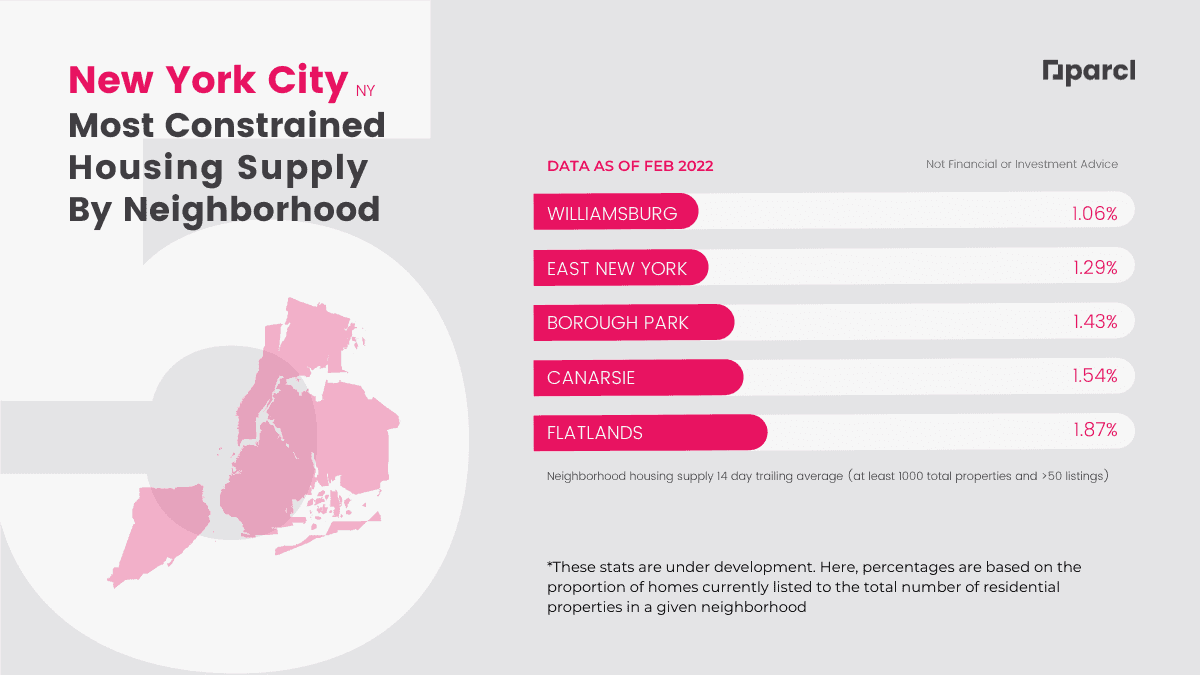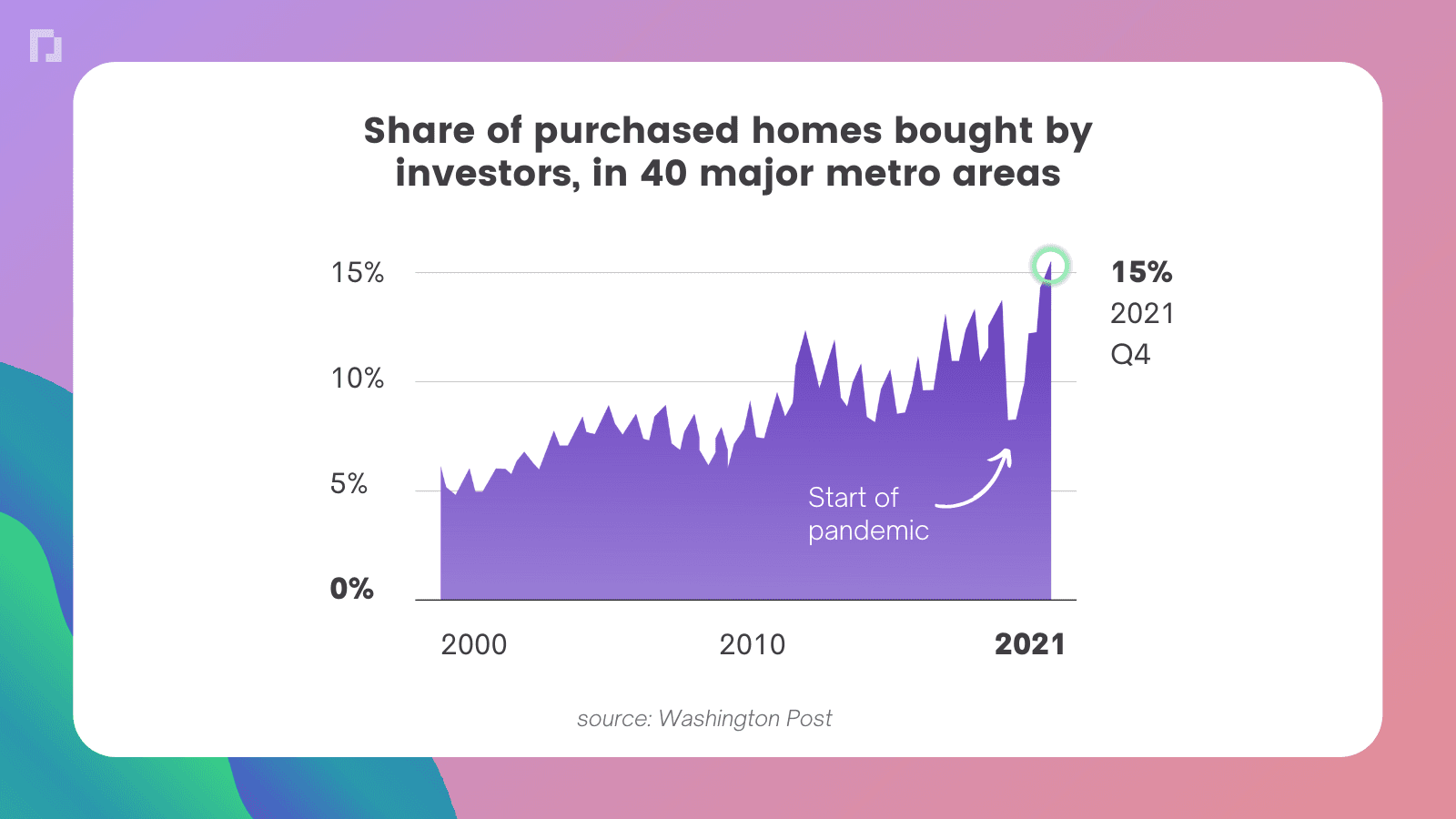5 Reasons Why Parcl is The Future of Real Estate Investing
The Real Estate market is notoriously slow at adopting new technologies, which is why investing or buying a home is almost inaccessible for most. But there are options out there, and one of the best for individual investors looking for greater exposure to this $300 trillion market would be Parcl.

Parcl Team
Aug 1, 2022
Introduction
The Real Estate market is notoriously slow at adopting new technologies, which is why investing or buying a home is almost inaccessible for most. But there are options out there, and one of the best for individual investors looking for greater exposure to this $300 trillion market would be Parcl.
And no, we're not just cocky or big-headed. Parcl was founded with a mission to solve major issues facing property investing, and we're confident we have the solution. So, let's go over the top five reasons why we think Parcl is the future of Real Estate investing.
Why Do We Need To "Fix" Real Estate Investing?
To understand this question, let's take a look at the most popular way to expose yourself to this huge market. And for most people, the first thought would be homeownership. Generally, a home is the average citizen's largest asset, but there's a problem.
Homeownership rates are currently at 20-year lows, sitting at around 65%; this leaves 115.3 million Americans without exposure to such a valuable asset.
The median US property value sits at roughly $346,000, which is great for long-term holders who bought 20 years ago. But, what about the up and coming generations? How can they be expected to invest their money with financial barriers to real estate investing so high?
These are questions that many people ask themselves when they're frustrated about not knowing where to start or having the cash to buy a property. And sure, there are cheaper properties around it's not impossible to find them.
But there’s an issue. It generally takes between 6 - 12 weeks to find a property, then usually you need to make some renovations adding roughly four months on top. In total, this process could take between 6 - 8 months, and there are plenty of other factors we've not mentioned.
Once you're bringing in rent from your tenants, seeing a profit could take, on average, between 5 - 7 years. This is assuming you've got the cash to buy a home in the first place; otherwise, the process of a bank loan is even more time-consuming and risky.
So, in summary, the way that an individual is most likely to profit from the most lucrative method of real estate investing is by spending years exposed to risk, drip-fed cash-returns, and an arduous process of growing their portfolio.
We don't believe that needs to be the case anymore because Parcl will make it more accessible than ever before to invest in Real Estate. Let’s take a look at the five reasons why we think Parcl is the future of Real Estate investing.
Five Reasons Why
We’ve outlined above the financial barriers along with a general example of how long it'll be before you see any worthy profit on a traditional real estate investment. But, what other headaches come with traditional investing, and how does Parcl solve them?
1) Removes the headache of traditional Real Estate investing
One issue is limited inventory, and according to recent research, many states are currently facing a housing deficit, meaning that the demand greatly outweighs the supply. Investors will have a hard time finding any reasonably priced properties. In fact, our own data shows that NYC neighborhoods have some of the most constrained housing supply in the country.

Parcl works around this problem by allowing investors to take positions on the price of the underlying asset, which is known as a synthetic derivative. Limited inventory is still an issue for the market, but not for those who invest using Parcl.
Market volatility is another huge risk factor to investors, and in fact, the market has been in a bull market for several years; we've been experiencing some comfortable appreciation these past few years, but it's not time to let your guard down. The Covid-19 pandemic had shown us an example of what could happen if the bubble burst.
Thankfully, Parcl allows users to invest in and trade geographical markets, which can be used for directional investment and hedging strategies in a traditionally opaque and walled-off asset class, which means that you can take either a buy or sell position in whatever US location is on the platform.
Meaning you could have taken a short position on Manhattan when people started moving to the suburbs during the Covid pandemic, making you a tidy return on investment.
2) Built for the Future
The Parcl Protocol is built on top of the Solana network, a blockchain network famous for its incredibly fast transaction speeds of roughly 50,000 per second. Solana also has competitively low gas fees of $0.00025 per transaction, which certainly beats those 5-7% broker fees.
Our protocol is built using Web3 technology, and this means we're able to provide an accessible way into real estate investing due to the use of synthetic assets, which are a form of derivative. Not only that, but we can provide liquidity to a historically illiquid market thanks to the help from AMM liquidity pools.
3) Data-informed
The more data, the better investment decisions you can make, and our data team at Parcl has been building some pretty interesting data points for you to use.

Thanks to Web3 technology, we can provide you with real-time property data, none of that bi-monthly data or quarterly data. It wouldn't be possible without the help of smart contracts and price oracles.
4) Exposure to most American real estate markets
When we launch, we'll have some of the most well-known geographical locations: we'll even give you the ability to trade on a granular or broad level. We'll allow you to invest in the areas of Manhattan, Malibu, Austin, and Miami all from your laptop.
The months after you'll, you'll see more areas come onto the platform, and eventually, we'll open Parcl up to offer locations across the world. There are no platforms that can currently give you this level of exposure, and in a way, that means you're not priced out.
There are other methods to invest in property at cheaper levels like Parcl, commonly known as fractional ownership, but this method is limited to a handful of properties at a time, meaning that you rarely get the chance to invest in a valuable piece of real estate, not to mention it's also highly granular.
REITs could be another option, but you've got zero control over where your capital is invested, meaning much higher risk.
5) Is Accessible to the average American
As we mentioned before, real estate investing is beyond inaccessible at this point, and the methods of gaining access are risky and expensive. Most don't have the time, capital, or risk tolerance for investing traditionally.
We felt like it was time to make real estate investing possible for those that fall into these categories. Thanks to Web3 technology and an awesome team, we can make that happen. We've made what was once an illiquid, process-heavy, and expensive market to be involved in now into a liquid, fast and cheap option for investors.
More and more institutional investors are buying up residential properties in direct competition with individual home buyers. And for communities with limited capital to go head to head with big-money players for these properties would be a waste of time. Parcl gives back power to these underserved communities.

Closing
Real estate has been historically dominated by those with huge cash reserves, making it inaccessible for the average citizen. Parcl, with the help of innovative blockchain technology, has created a way that's financially viable and straightforward for the average person to invest in the $300 trillion Real Estate market.
If you want to keep up with Parcl and understand more about our mission. Sign up for our newsletter, or even take a look at our Intro to Parcl article, written by our Founder and CEO, Trevor Bacon.
Follow us
🌐 Join our Waitlist: https://parcl.co
🐤 Twitter: https://twitter.com/Parcl
🏡 Discord: https://discord.gg/zWxp2JupNA
Shared content and posted charts are intended to be used for informational and educational purposes only. Parcl does not offer, and this information shall not be understood or construed as, financial advice or investment recommendations. The information provided is not a substitute for advice from an investment professional. Parcl does not accept liability for any financial loss or damages. For more information please see the terms of use.

Parcl Team



